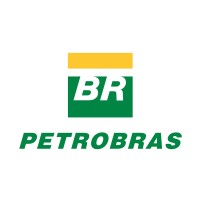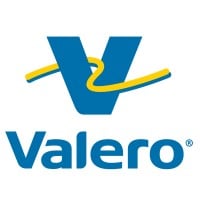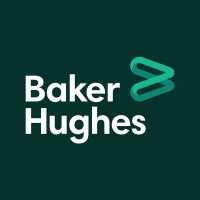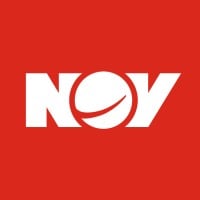Company Cyber Security Posture
NANA
NA Company Details
NA
NA
NA
NA
NA
NA
Scan still pending
NA
NA
Between 200 and 800
This score is AI-generated and less favored by cyber insurers, who prefer the TPRM score.
 NA Global Score
NA Global Score.png)

Company Scoring based on AI Models
| Model Name | Date | Description | Current Score Difference | Score |
|---|---|---|---|---|
| AVERAGE-Industry | 03-12-2025 | This score represents the average cybersecurity rating of companies already scanned within the same industry. It provides a benchmark to compare an individual company's security posture against its industry peers. | N/A | Between 200 and 800 |
Company Cyber Security News & History
| Entity | Type | Severity | Impact | Seen | Url ID | Details | View |
|---|
Company Subsidiaries

NA
Access Data Using Our API

Get company history
.png)
NA Cyber Security News
Marathon's private fleet fuels a winning culture
Marathon's private fleet fuels a winning culture. The coast-to-coast tanker operations are backed by a safety-focused culture that drives it to ...
Marathon Petroleum Corp Spokesperson Says Teams Responding To Fire At Co's Galveston Bay Refinery
Marathon Petroleum Corp: * MARATHON PETROLEUM CORP SPOKESPERSON- TEAMS RESPONDING TO FIRE AT CO'S GALVESTON BAY REFINERY, NO REPORTS OF ...
Marathon Petroleum Corp SEC 10-K Report
Marathon Petroleum Corp, a leading integrated downstream energy company, has released its 2024 Form 10-K report, detailing its financial and ...
ConocoPhillips completes acquisition of Marathon Oil Corporation
ConocoPhillips is one of the world's leading exploration and production companies based on both production and reserves, with a globally ...
Top Security Executives Recognized at the 2025 HoustonCISO ORBIE Awards
Leading CISOs honored for leadership, security, and business impact · Leadership and management effectiveness · Business protection created by ...
Women Know Cyber: 150 Fascinating Females Fighting Cybercrime
150 Fascinating Females Fighting Cybercrime. Role models for students, parents, educators, and the cybersecurity community.
Marathon Oil Corporation Declares Third Quarter 2024 Dividend
Marathon Oil Corporation (NYSE: MRO) reported third quarter 2024 net income of $287 million or $0.51 per diluted share, which includes the ...
Live Nasdaq Composite Coverage: META, MSTR Up, CRWD Drags
All three of the major stock market indices have now flipped positive, with 1.1% gains across the board in the Dow Jones Industrial Average, Nasdaq Composite ...
Marathon Petroleum's Q3 profit beats, boosts share buybacks by $5 billion
Oil refiner Marathon Petroleum reported its third-quarter earnings on Tuesday, beating Wall Street estimates on better-than-expected ...

NA Similar Companies

ADNOC Group
We are one of the world's leading energy producers, and a primary catalyst for Abu Dhabi’s growth and diversification. We operate across the entire hydrocarbon value chain, through a network of fully-integrated businesses, with interests that range from exploration, production, storage, refining a

Organisation Ourhoud
Sonatrach (Société Nationale pour la Recherche, la Production, le Transport, la Transformation, et la Commercialisation des Hydrocarbures s.p.a.) is an Algerian government-owned company formed to exploit the hydrocarbon resources of the country. Its diversified activities cover all aspects of Oil &

Petrobras
Nosso propósito é prover energia que assegure prosperidade de forma ética, justa, segura e competitiva. Queremos ser a melhor empresa diversificada e integrada de energia na geração de valor, construindo um mundo mais sustentável, conciliando o foco em óleo e gás com a diversificação em negócios de

Valero
Valero is an international manufacturer and marketer of transportation fuels and petrochemical products. We are a Fortune 500 company based in San Antonio, Texas, fueled by nearly 10,000 employees and 15 petroleum refineries with a combined throughput capacity of approximately 3.2 million barrels pe

Baker Hughes
Baker Hughes (NASDAQ: BKR) is an energy technology company that provides solutions for energy and industrial customers worldwide. Built on a century of experience and conducting business in over 120 countries, our innovative technologies and services are taking energy forward – making it safer, clea

NOV
NOV delivers technology-driven solutions to empower the global energy industry. For more than 150 years, NOV has pioneered innovations that enable its customers to safely produce abundant energy while minimizing environmental impact. The energy industry depends on NOV’s deep expertise and technology

Frequently Asked Questions
Explore insights on cybersecurity incidents, risk posture, and Rankiteo's assessments.
NA CyberSecurity History Information
How many cyber incidents has NA faced?
Total Incidents: According to Rankiteo, NA has faced 0 incidents in the past.
What types of cybersecurity incidents have occurred at NA?
Incident Types: The types of cybersecurity incidents that have occurred include .
Additional Questions
What Do We Measure?
















Every week, Rankiteo analyzes billions of signals to give organizations a sharper, faster view of emerging risks. With deeper, more actionable intelligence at their fingertips, security teams can outpace threat actors, respond instantly to Zero-Day attacks, and dramatically shrink their risk exposure window.
These are some of the factors we use to calculate the overall score:
Identify exposed access points, detect misconfigured SSL certificates, and uncover vulnerabilities across the network infrastructure.
Gain visibility into the software components used within an organization to detect vulnerabilities, manage risk, and ensure supply chain security.
Monitor and manage all IT assets and their configurations to ensure accurate, real-time visibility across the company's technology environment.
Leverage real-time insights on active threats, malware campaigns, and emerging vulnerabilities to proactively defend against evolving cyberattacks.




